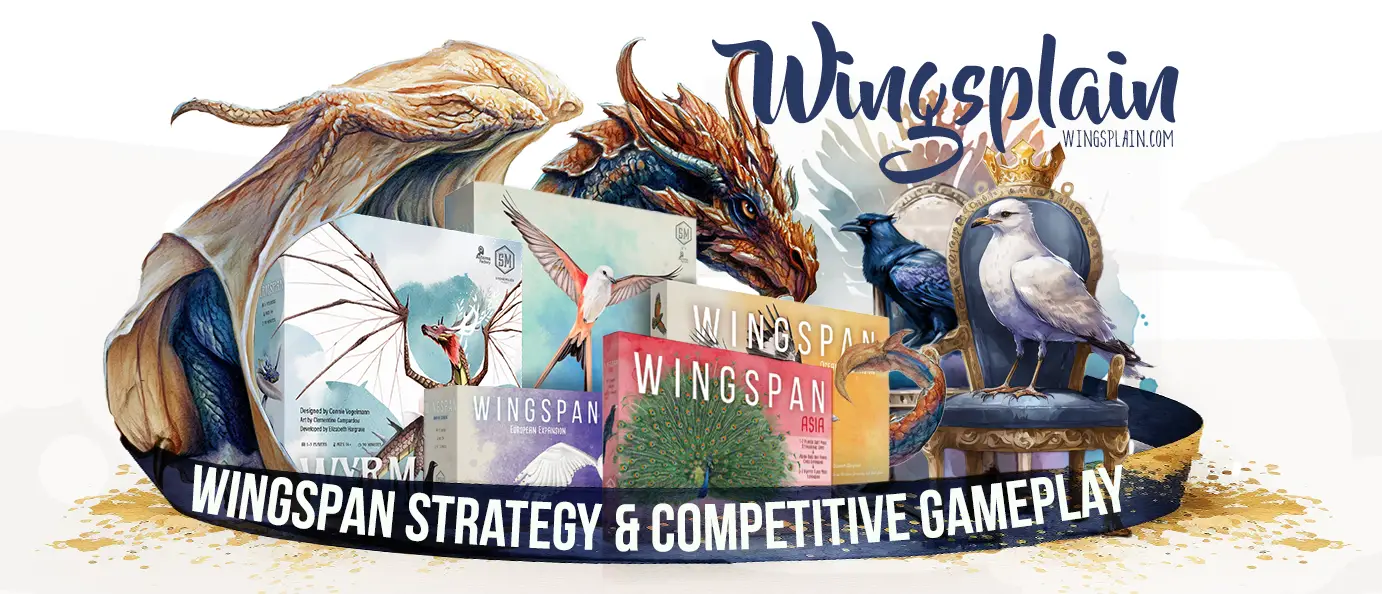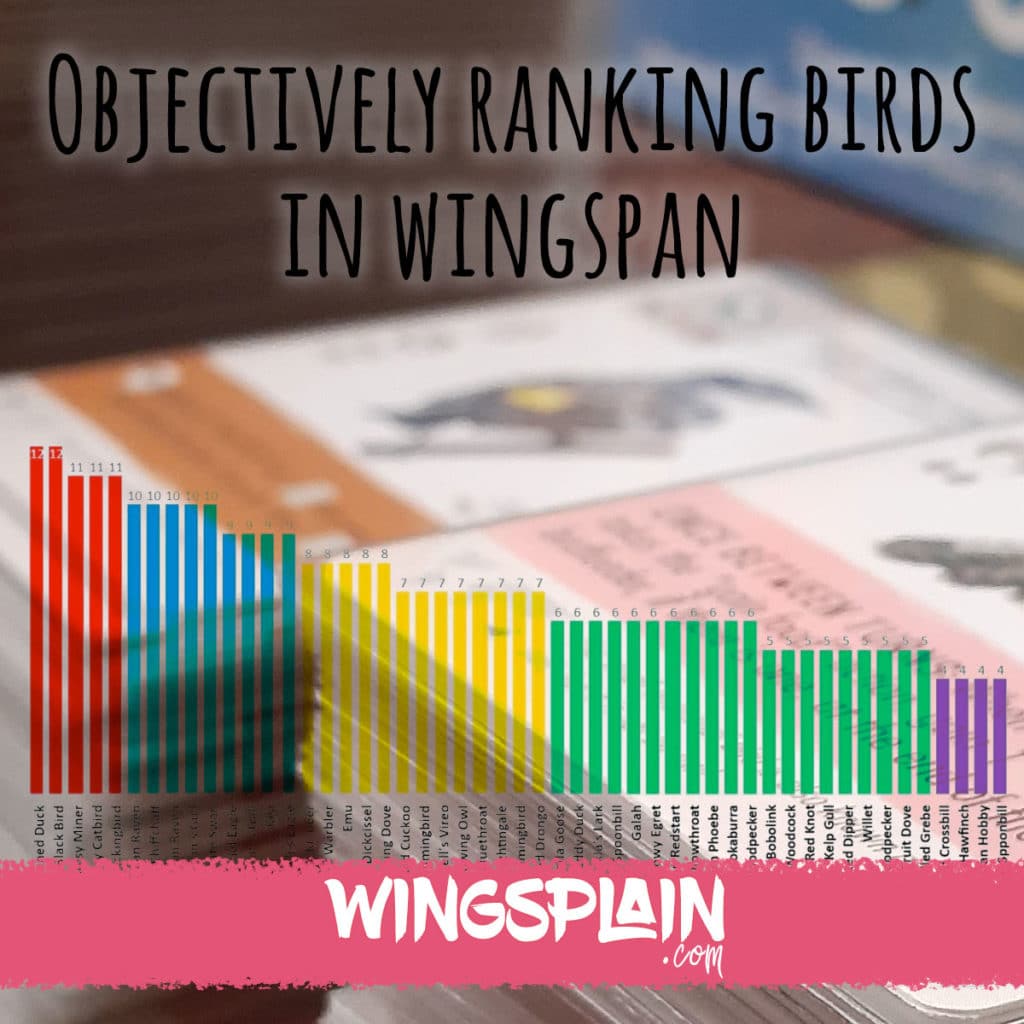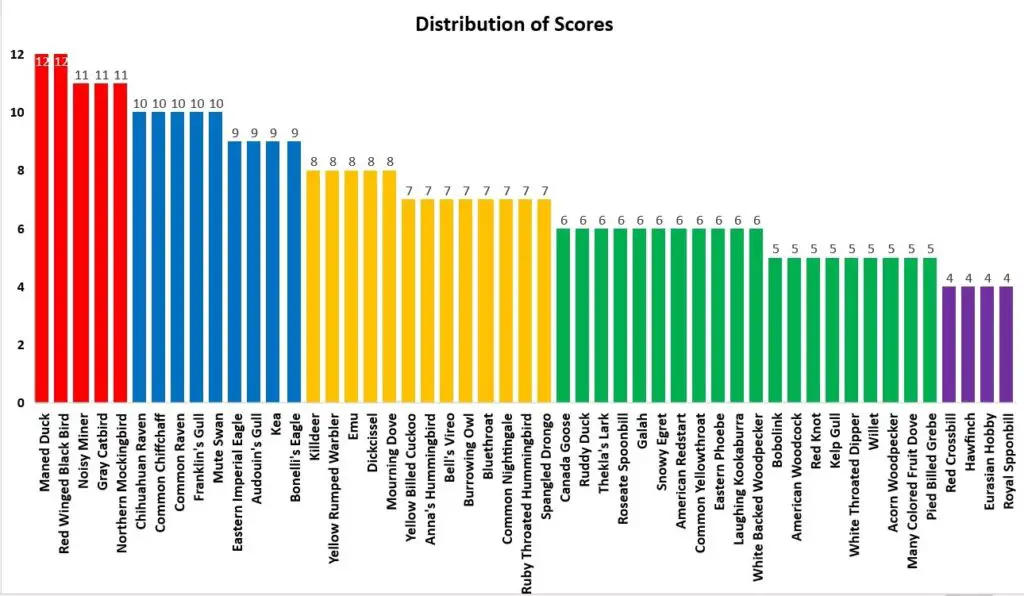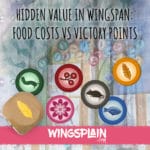Disclaimer: Since I originally posted this, there has been some good debate and feedback surrounding the philosophy of objectivity and questioning whether the qualities scored here are objectively good and whether this method can actually result in an objective outcome.
I think one thing we can all agree on is that this scoring method attempts to be more objective than my purely subjective tier list. Debating objectivity and battling against subjective reality and cognitive bias has been done by the great philosophers of history over the centuries. Many people question whether true objectivity can be attained at all. Regardless, I don’t think we really need to worry about that rabbit hole because this is just a game after all. Anyway, back to the topic at hand…
Over the last few months, I have maintained a Wingspan Card Tier List based on my subjective opinions of how cards rank in Wingspan. The problem with a list of that nature is that it’s based on the opinions of one person and not irrefutable facts or numbers that can be universally regarded as true. I can “Wingsplain” to others why I rank those birds the way that I do, but at the end of the day, there are disagreements about rankings based on opinion.
I’ve set out to create a more objective method of ranking the birds. I’ve put together a list of objective qualities that birds can possess in the game. I can subjectively say that this list of qualities represents the most positive qualities that cards can have within the parameters set by the rules of Wingspan. I think most can agree on this and accept this list with the exception of four qualities that could be regarded as subjective (more on those below).
Objectively, The Best Qualities Birds Can Have in Wingspan
- Goes in the habitat that fuels its power
- Produces an “off habitat” resource
- Doesn’t require other birds in play to function optimally
- Has a Star Nest
- Has a “ * ” Wingspan
- Power Produces Victory Points (eggs/tucked cards/cache/play another bird)
- Doesn’t give opponents resources
- Wild In Food Cost
- Produces Nectar
- Produces more than 1 net resource per activation (food/egg/card)
- Turns resources from other cards into VP/Resources
- General qualities don’t interfere with its effectiveness
- 5-6 egg capacity
- Scores 2 or more VP per activation of brown power
- Power that converts non-VP resource (food/cards) into VP (cached/tucked/lay egg)
- Power that lets you look at more than two bonus cards
- Card scores 5 raw VP per food in cost
- Worth 8-9 Raw VP
- Doesn’t require micro-management to be effective (Could be subjective)
- High Value for the cost of 0-1 food (perceived value is subjective)
- Qualifies for more than 25% of Bonus Cards (% is subjectively set)
- Qualifies for XX% of Round Bonuses (% is subjectively set)
Guidelines
- Each quality is worth one point.
- If habitat doesn’t affect power, score zero points in “Goes in habitat that fuels power.”
- General Qualities: Habitat options, nest size, Raw VP total, Wingspan, Beak direction. Thekla’s Lark is an example of a bird that gets in its own way and whose general qualities interfere with its effectiveness. It’s restricted to the Grasslands but needs food to use its ability. Its small nest size also limits its egg-laying power.
- Micro-management: constantly taking actions to maintain effectiveness or requiring substantial setup to score a payoff. This is probably subjective.
- Off Habitat Resource Examples: Producing cards/eggs in the Forest, producing food/cards in the Grasslands, producing food/eggs in the Wetlands.
- Raw VP: The printed Victory Point value of the bird card. “Feather Points.”
- High Value: This may be subjective. What is “high value”? We all know that Killdeer is high value for a single food cost. I think most people know high value when they see it, but newer players may not yet be at the point where they can distinguish the true value of a bird-like Killdeer versus a bird-like Black Vulture.
- Birds qualifying for bonus cards: I used the precedent set by TawnyFrogmouth’s “Wingspan Bird Card List” posted on Board Game Geeks. In this spreadsheet, only 24 bonus cards are checked vs. the bird cards. These 24 cards look for specific qualities of the bird cards themselves. The excluded bonus cards check habitats, quantities of eggs laid on birds, consecutive wingspans, or other qualities that any card could potentially qualify for. Based on the data, 32% of birds don’t meet the 25% threshold for bonus cards. They are in the minority and could be considered “weaker” by not meeting it, thus being scored lower by this list. The number of bonus cards used to rank this quality will likely go up with each new expansion.
- Birds qualifying for Round Bonuses: I didn’t actually rate anything for this quality. I believe this is something that should be taken into consideration when ranking birds with this list, but it’s going to take a lot of work that I don’t want to do right now. I don’t have a resource like Wingsearch or a fan-made spreadsheet making this easier to determine. The amount of round bonuses used to rank this quality will likely go up with each new expansion. I also suspect that this list has enough qualities to score against that we still have a general idea of how each bird rates against the “big picture.” A bird could go up by one tier or even stay in the same tier. We won’t see a massive tier jump because of a single quality since each is only worth one point.
Tier 0: 11-12 points (God Tier)
Tier 1: 9-10 points
Tier 2: 7-8 points
Tier 3: 5-6 points (Average)
Tier 4: 3-4 points
Tier 5: 1-2 points
Tier 6: 0 points
Using this scoring method, I ranked all of the birds from God Tier and Tier 1 from Wingsplain’s Bird Card Tier List and several random samples from each other tier. I scored fifty-one birds in this test experiment. Here is how they rank:
One problem that I have with this scoring system is that it doesn’t take into account the timing of certain cards. For example, if you play Galah early and build an engine around it, you’re going to score a lot of points from it. I feel like it is one of the best cards in the game. But this list calls it “average.” I suppose its early-game potential is balanced out by its late-game potential, which is much lower. A late-game Galah won’t do much for you as its general qualities aren’t terribly impressive, and its power won’t have time to earn points for you. Its average of pros and cons equates to an average rating.
Grey Catbird/Northern Mockingjay were kind of strange to score. I gave them credit for all positive and negative effects that could result from copying a brown power. They are only as good as the other birds you play, but their potential is very high.
Something interesting to note is how well Thekla’s Lark scores. This bird is often maligned as one of the worst cards in the game. It scores the same as Canada Goose at six (Tier 3; Average). Most people would say, “No way!”. I would be one of them, but that is subjective. According to this scoring system that is trying to be as objective as possible, the average of the pros and cons of the Lark is equivalent to the average of the pros and cons of the Goose—interesting food for thought. When we look at these two birds objectively side by side, they are incredibly similar. The key difference between the two is that the Lark costs three food vs. the Goose’s two, and the Lark is hard-capped at three eggs while the Goose can tuck an infinite amount of cards. This more abstract concept of “uncapped VP” is the distinguishing factor between these two cards and isn’t accounted for on the list. The Goose would probably move up a tier by scoring seven points instead of six if it was.
Killdeer surprisingly scores two points and one tier lower than the other “Power 4” cards from the base game. We can see from this scoring method that the Killdeer’s general qualities don’t stack up to its counterparts.
Spangled Drongo is a bird that I’ve received feedback about from passionate supporters, citing that it was too low on the subjective list. It shines brighter on the more objective list, scoring seven points and rising to Tier 2 from Tier 4 (Average) on the subjective list.
Red-Winged Blackbird scores amazingly high, scoring twelve (Tier 0, “God Tier”) just like Maned Duck. I’ve always considered this a high-value card and often acquire it whenever I see it in the tray. In the early game, it is close to a 100% auto pick for me. Its early game VP generation and egg-producing ability from the Wetlands, all for the cost of 1 food, gives you a strong platform from which to draw cards and lay eggs. My subjective tier list undervalued a card that I hold in high regard, which is interesting. It’s surprising to see that I apparently wasn’t giving one of my favorite cards enough credit. I go into detail about this card here: The Power of Tucking Cards in Wingspan
This system doesn’t specifically account for teal, pink, white, or gold powers like it does for brown powers, but I’m not sure it has to. Brown powers are unique in that one could be activated twenty-five times during the course of the game, so they have a larger window of opportunity to make a larger impact. Brown might be the best power type. Furthermore, I think the list does a good job capturing the qualities expressed by the other power colors through other scoring methods.
Conclusion
I find the preliminary results of this experiment pretty interesting. I will continue to rank birds with this method and determine if it is worth converting my current tier list over to this new way of scoring. I’m interested to see how more Bottom Tier cards score, as it seems pretty hard to score “below average” (Tier 3) using this method.





This is fascinating! Do you think you’ll be able to objectively evaluate/rank more cards, using this method?
Thanks for the content.
What do you mean by “Has a ‘*’ wingspan”?
Some birds have an asterisk for a wingspan, such as the Little Penguin.. This means that their wingspan is wild and they qualify for anything that checks a wingspan. It should be noted that these are flightless birds for real which is an interesting bit of trivia.